Tension, visual chaos, stress, traffic lights, road rage. One thing leads to another and yet they all seem intertwined. One of the “necessary” evils of this world as now designed is the system of roads that criss-cross our planet.
Is there a better way to plan roads while actually adding beauty and reducing stress? I believe that there is. The roundabout. I can write from experience because I have lived about half of my life in North America (a non roundabout environment) and half of my life in Europe (a roundabout environment). Let me show you through research, pictures and my own personal observations what I have discovered.
Note:I took all the pictures that you see in this article within a radius of 6 miles from my home.
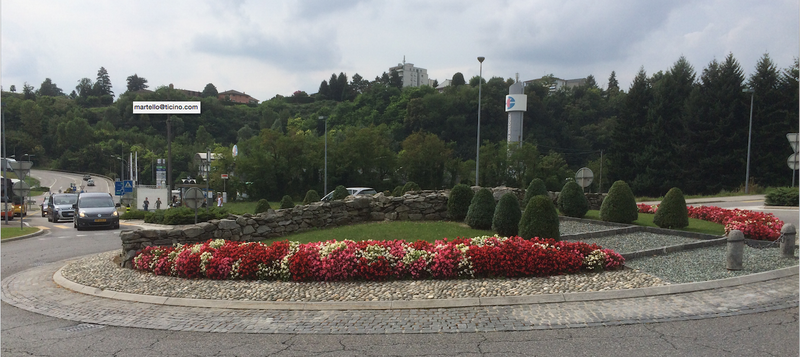
This highly efficient roundabout was even more beautiful a few weeks ago because there was a huge tree in the middle. Unfortunately it had to be cut down after a major storm ripped through the area.
Note: Roundabouts are slowly gaining popularity in North America. As an example please see the site RoundaboutsUSA which states as its goal: “This site is dedicated to free traffic flow through the design and use of roundabouts”.
When I was an Industrial Design student at college we were taught the Bauhaus ideology. One of the tenets of this is that: “Form follows function”, that is, that the shape of a building or object should be primarily based on its intended function or purpose. However, I believe, as others do, that there should also be a second function. Beauty should be added to the user experience. Let’s examine these two functions and see how the roundabout is superior to the typical four-way intersection.
The Primary Function of Roads Is Practicality
The purpose of a road or intersection should be to move cars in the least wasteful, quickest and safest way. In order for a car to make a turn should a four way intersection be at 90° angles or curved as in a roundabout? Is it not wasteful to stop and wait when there are no other cars impeding your progress? Let’s investigate.
Let Me Describe Two Scenarios:
Scenario One: You are driving through a town or small city. The light on the main road turns green, you accelerate to 35 mph, drive for one block, slow down as the light turns red at the next intersection, wait for 1 minute and then do it again. Then you do it again, again, again and again. The only break from the monotony is the back of the car that you’re following and maybe the string of traffic lights overhead! Finally you’ve crossed the city! How do you feel? Most likely stressed, nervous and frustrated. At times you find yourself stopped at a traffic light waiting for it to change and there are no other cars anywhere to be seen. What a waste of time and energy!
Once, when I was 18, I was driving home from playing hockey and it was after midnight. There I was stopped at an intersection and the roads were deserted for as far as the eye could see in either direction. It seemed that the light just wouldn’t change and at a certain point I got so frustrated that I just crossed through the red light. Unfortunately for me there was a police car sitting at the gas station on the corner and well, you know the rest of the story!
Scenario Two: In the small cities and towns that I travel through there are virtually no stop signs or traffic lights. From my house to the highway I pass 7 different intersections, some of them major and I don’t stop even once. That’s because they all have roundabouts. When I get to the roundabout it acts like a yield, you slow down and generally just keep going. I can spend a whole day running errands, going to work and heading out in the evening to visit friends without ever having to stop at an intersection. The result? I arrive at my destination quicker and more relaxed.
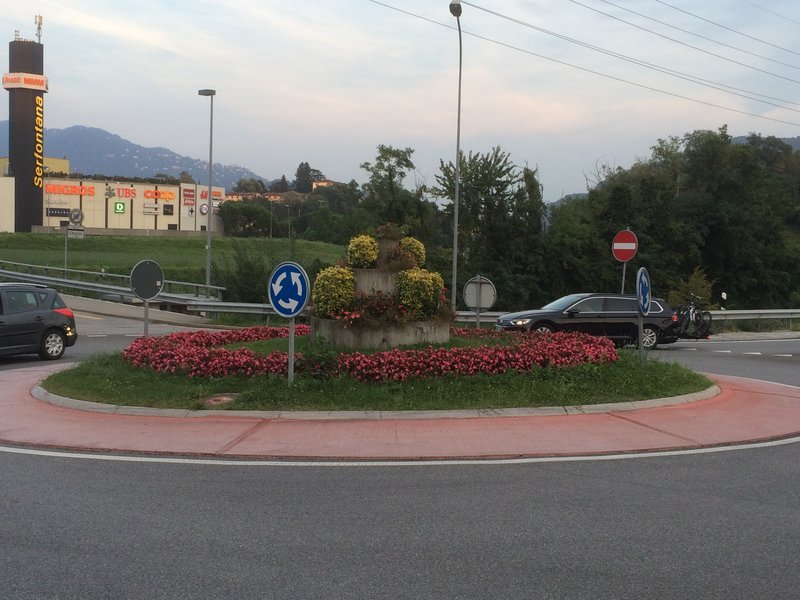
From this roundabout you can enter the highway, proceed to the mall or continue onto the main road.
Roundabout Benefits
The Washington State Department of Transportation did an analysis of the benefits of roundabouts and the results were overwhelmingly positive.
1.) Improve safety: Studies have shown that roundabouts are safer than traditional stop sign or signal-controlled intersections. They reduce injury from crashes by 75 percent at intersections where traditional traffic lights or stop signs were once used.
This is because drivers must slow down and yield to traffic before entering a roundabout. Speeds in the roundabout are usually between 15 and 20 miles per hour and therefore the few collisions that occur are most often minor and cause few injuries. Additionally since there is no light to beat, drivers don't have the incentive to speed up like they might at a traditional intersection.
2.)Reduce delay and improve traffic flow: Traffic is not required to stop – only yield – so the intersection can handle more traffic in the same amount of time.
Studies by Kansas State University measured traffic flow at intersections before and after conversion to roundabouts. Creating a roundabout led to a 20 per cent reduction in delays.
In season 16 episode 6 of the TV show "Myth Busters" they tested the roundabout. Besides noting their own test results showing that the roundabout resulted in a 20 per cent increase in traffic flow Adam Savage stated: “From a drivers viewpoint this is dreamy.”
3.)Roundabouts are more effective during power outages: In contrast to signalized intersections, which normally require police to direct traffic, roundabouts continue to function normally.
4.)Less space: A roundabout may need more space within the actual intersection, but often take up less space on the streets approaching the roundabout.
Concluding Comments About the Functionality of Roundabouts
From all of the above information I think that we can acknowledge the superiority of the roundabout under the first criteria of “form follows function”. What can we say however about the second function which is that of adding beauty?
Adding Beauty to Roads With Roundabouts
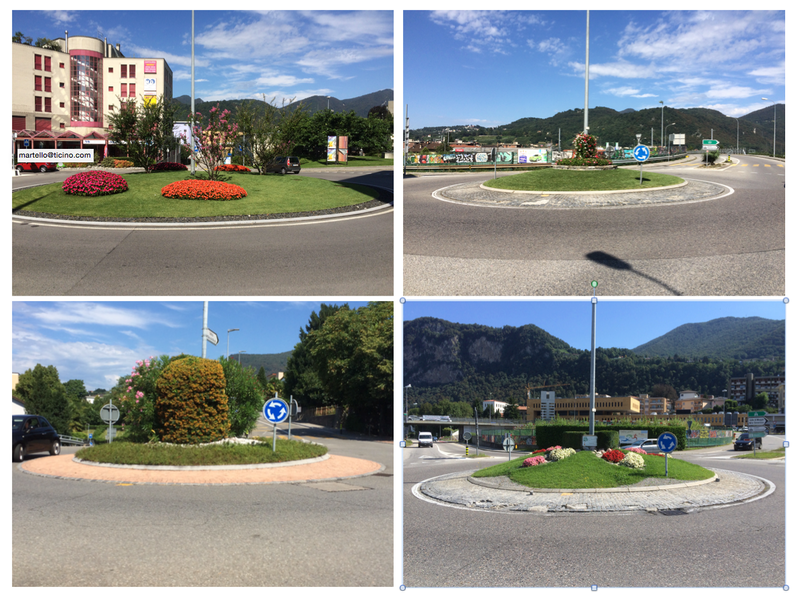
Do these roundabouts sooth your eye?
Don Norman an expert on usability explains that aesthetics play an important role regarding the usability of an interactive system such as roadways. Everything that we take in with our eyes affects our emotions. These can either help or hinder the way that we perform a task such as driving. If we are in a negative emotional state, then our ability to solve a problem such as negotiating traffic is hindered. A positive emotional state allows us to problem solve with a lot of creativity.
Where I live most of the roundabouts have been beautified with landscaping and this pleases the eye and relaxes the drivers. There is less of a need to drive out into the countryside in order to observe beauty.
Have a look at these two roundabouts (one landscaped and one not) and notice how they affect your emotional state.
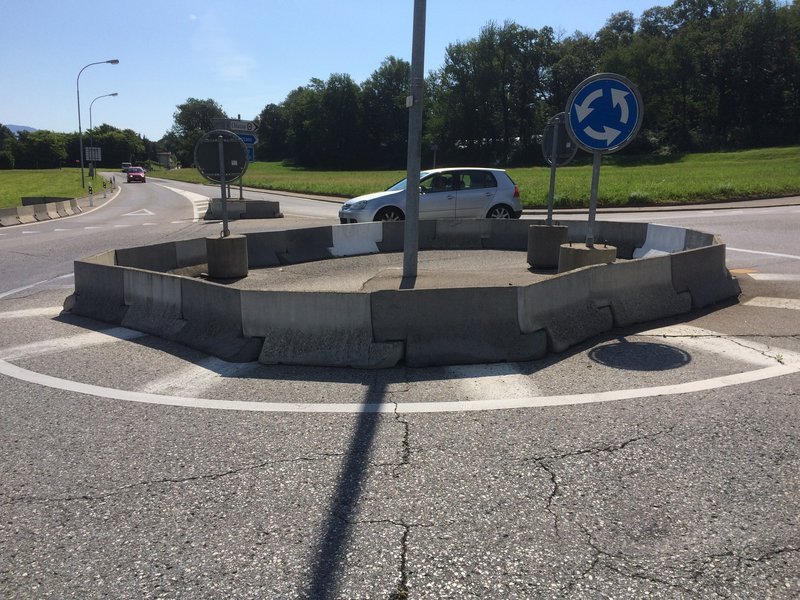
How does this image affect you? Please compare this non landscaped roundabout with the one below.
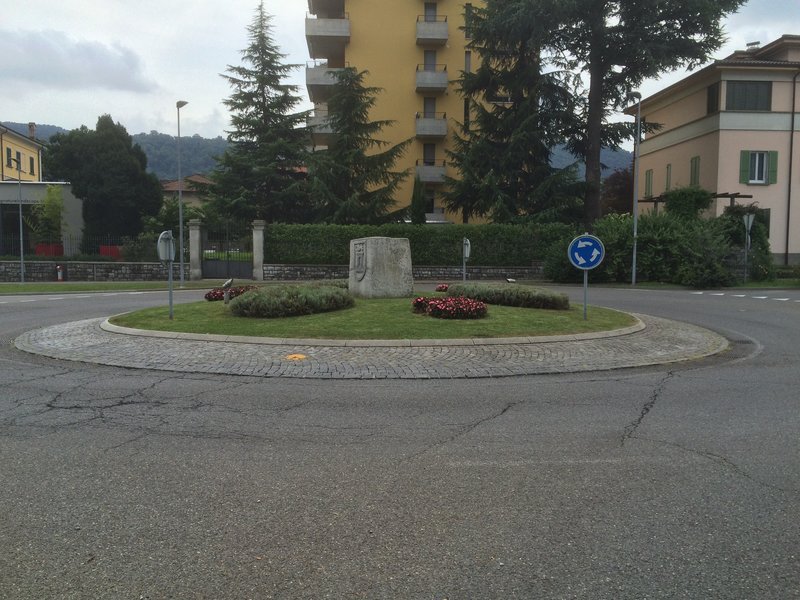
There is a huge difference in the way this roundabout and the one above affects your mood! Would you not agree?
What About the Cost of Landscaping a Roundabout?
In my area they have come up with what I feel is an ingenious solution to costs. Often local landscapers are invited to submit their designs to the local township. The company that is then selected landscapes the roundabout at their own cost with the proviso that they can include a small tasteful sign advertising their services! Don’t you think that this is a mutually beneficial solution?
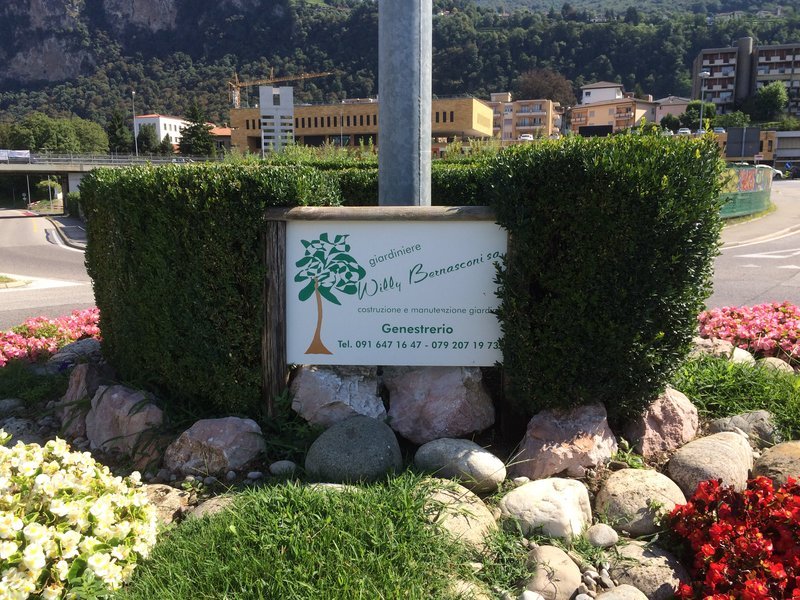
The company that maintains this roundabout proudly displays their sign!
In Conclusion
I think that I have demonstrated that the roundabout offers a superior alternative to the classic stop sign or traffic light. It adds safety and convenience at a lower cost. The added bonus is that it can also add beauty while reducing stress. Maybe some of the ideas and proofs presented here can help your community in creating a more user friendly road system.
Sure, roundabouts won't solve all the problems inherent in a culture addicted to the automobile but remember, they work equally well with electrically powered vehicles and even bicycles!
I look forward to your comments and if you like my articles please upvote and follow me!
Until next time,
@kus-knee (The Old Dog)

